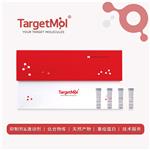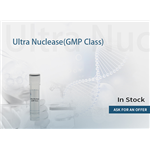Turbonuclease from Serratia marcescens has been used for cell lysis during proximity biotinylation assay (BioID) and affinity-purification. It has also been used as a component of lysis buffer for protein extraction from cell lines for affinity purification studies.
The enzyme from Sigma has been used to limit cell clumping during the preparation of chimeric cell mixtures. It has also been used for the preparation of nuclear extracts by digesting DNA and releasing nuclear proteins intimately associated with DNA.
The enzyme has been used for an assay to detect the amount of Tf1 RNA that is protected from degradation by the nuclease, Benzonase. The Tf1 element of Schizosaccharomyces pombe is a long terminal repeat-containing retrotransposon that encodes functional protease, reverse transcriptase, and integrase proteins. It has also been used in the fractionation of nuclear pellet and nuclear extract obtained from cell lysates.
Endonuclease from Serratia marcescens is a dimer containing two identical monomeric units with distinct protein folds. The core contains a six-stranded antiparallel β-sheet flanked by α-helices on either side. Each monomer bears one active site. This enzyme is a magnesium-dependent nucleases.
Benzonase? is a genetically engineered endonuclease from Serratia marcescens. The protein is a dimer of 30 kDa subunits with two essential disulfide bonds. This endonuclease attacks and degrades all forms of DNA and RNA (single stranded, double stranded, linear and circular) and is effective over a wide range of operating conditions. It completely digests nucleic acids to 5′- monophosphate terminated oligonucleotides 3 to 5 bases in length. This is ideal for the removal of nucleic acids from recombinant proteins. It can also be used for applications where complete digestion of nucleic acids is desirable. It also reduces viscosity in protein extracts and prevents cell clumping. Pre-treatment of a protein sample with this enzyme improves its resolution on 2D gel electrophoresis by eliminating any bound nucleic acids. The optimum pH for enzyme activity is found to be 8.0-9.2.


